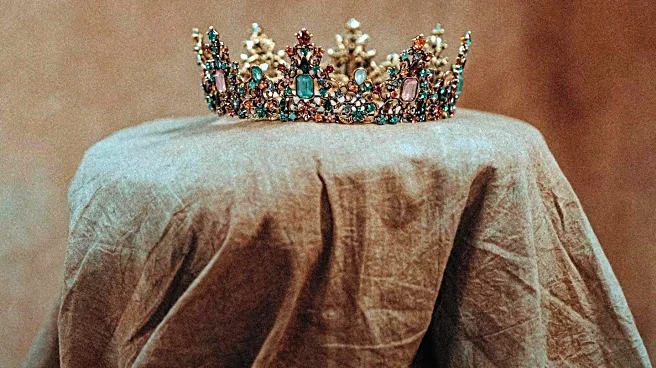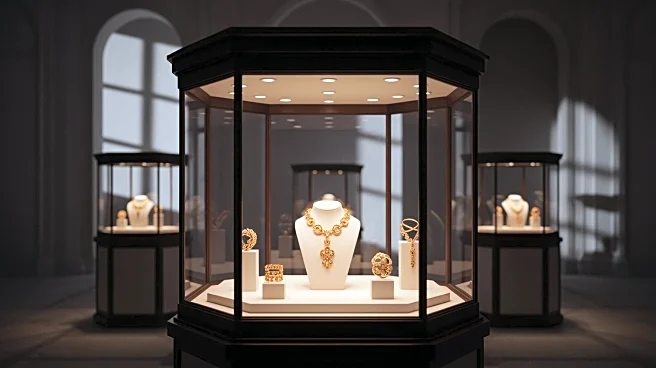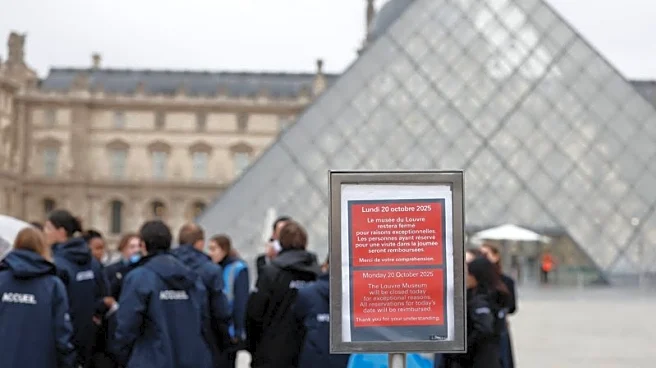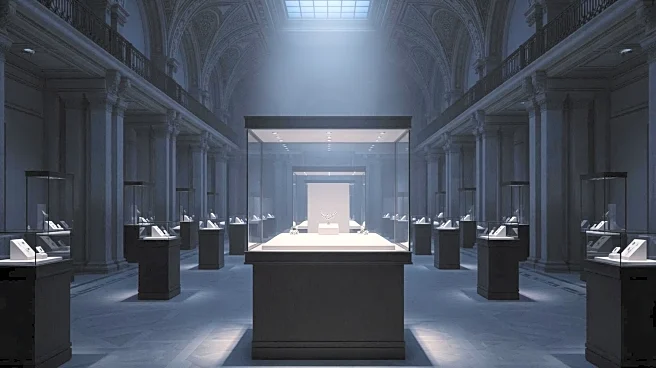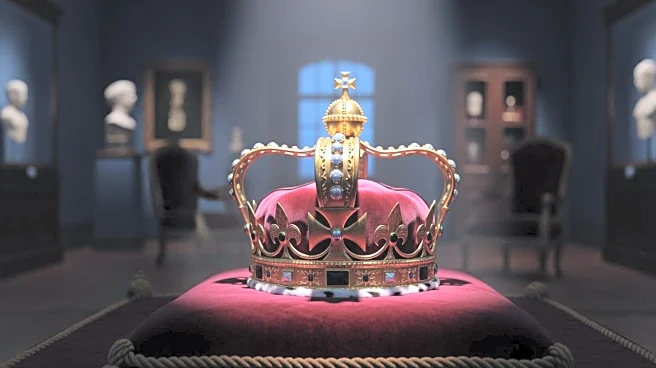What's Happening?
In a bold daylight heist, thieves broke into the Louvre Museum in Paris and stole several pieces of priceless jewelry from the Apollo Gallery, which houses the French crown jewels. The robbery took place
shortly after the museum opened to visitors on a Sunday. The thieves used a mechanized furniture elevator attached to a truck to gain access through a window. Within seven minutes, they cut through display cases with a grinder and escaped on motorbikes. The stolen items include a tiara, necklace, and earrings from the collections of Queen Marie-Amélie and Empress Marie-Louise, as well as a diamond brooch and the tiara of Empress Eugénie. The French Interior Minister described the stolen items as having inestimable heritage and historical value.
Why It's Important?
The theft at the Louvre underscores vulnerabilities in security at even the most prestigious cultural institutions. The stolen jewelry, beyond its market value, represents significant cultural and historical heritage. This incident may prompt museums worldwide to reassess their security protocols, especially for high-value exhibits. The heist also raises concerns about the black market for stolen art and artifacts, which can fund other illicit activities. The swift and professional nature of the robbery suggests the involvement of organized crime, highlighting the need for international cooperation in recovering the stolen items and preventing similar incidents.
What's Next?
An investigation led by the Paris prosecutor's office is underway to recover the stolen jewelry and apprehend the thieves. The Louvre has closed temporarily to preserve evidence and assist in the investigation. French authorities are likely to enhance security measures at the museum and other cultural sites. The incident may also lead to increased international collaboration to track and recover stolen cultural artifacts. The museum's closure and the high-profile nature of the theft may impact visitor numbers and security policies at cultural institutions globally.



